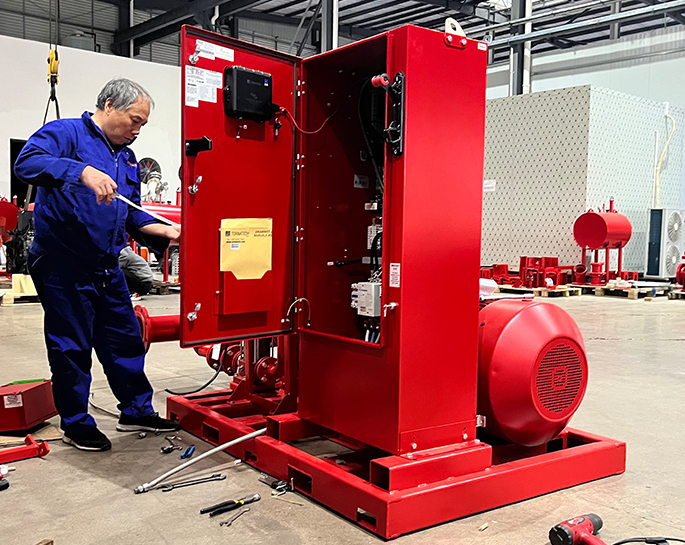Features of fire pump main pump and backup pump
Nov 15, 2023
Share:
Fire pumps are a crucial component of fire protection systems, ensuring an adequate water supply to combat fires. There are generally two types of fire pumps: the main pump and the backup pump. Here are some features and considerations for both:
Main Fire Pump:
-
Capacity:
- The main pump is designed to provide the primary water flow needed for fire protection.
- Capacity is typically determined based on the fire protection system's requirements and the size of the protected area.
-
Power Source:
- Main pumps are usually electrically driven, diesel engine-driven, or sometimes a combination of both for redundancy.
- Electric pumps are common for urban areas with reliable power sources, while diesel pumps are used in locations where power may be unreliable or during power outages.
-
Reliability:
- Main pumps are built for high reliability since they are the primary source of water for fire suppression.
- Regular maintenance and testing are crucial to ensure their readiness during emergencies.
-
Control System:
- Main pumps are equipped with control systems to monitor water pressure, start and stop the pump, and communicate with fire detection systems.
- Automation features may include the ability to start automatically when a drop in water pressure is detected.
-
Performance Standards:
- Main pumps must adhere to industry standards and regulations, such as NFPA 20 (National Fire Protection Association) and local building codes.
Backup Fire Pump:
-
Redundancy:
- Backup pumps are installed to provide a secondary water source in case the main pump fails or requires maintenance.
- Redundancy ensures the reliability of the fire protection system.
-
Power Source:
- Backup pumps may have a different power source than the main pump to provide an additional layer of reliability.
- For example, if the main pump is electric, the backup pump might be diesel-driven or vice versa.
-
Automatic Switching:
- Backup pumps are often equipped with an automatic transfer switch that activates them when the main pump fails or requires maintenance.
- This automatic switching minimizes downtime and ensures continuous water supply for fire protection.
-
Testing and Maintenance:
- Backup pumps should be regularly tested to ensure they are operational when needed.
- Like the main pump, routine maintenance is essential to keep the backup pump in good working condition.
-
Performance Standards:
- Backup pumps must also comply with relevant industry standards and local codes to ensure their effectiveness in an emergency.
In summary, the main fire pump and backup pump work together to provide a reliable and redundant water supply for fire protection. Regular maintenance, testing, and compliance with standards are critical for the proper functioning of both pumps.


.png)
.png)

.png)


